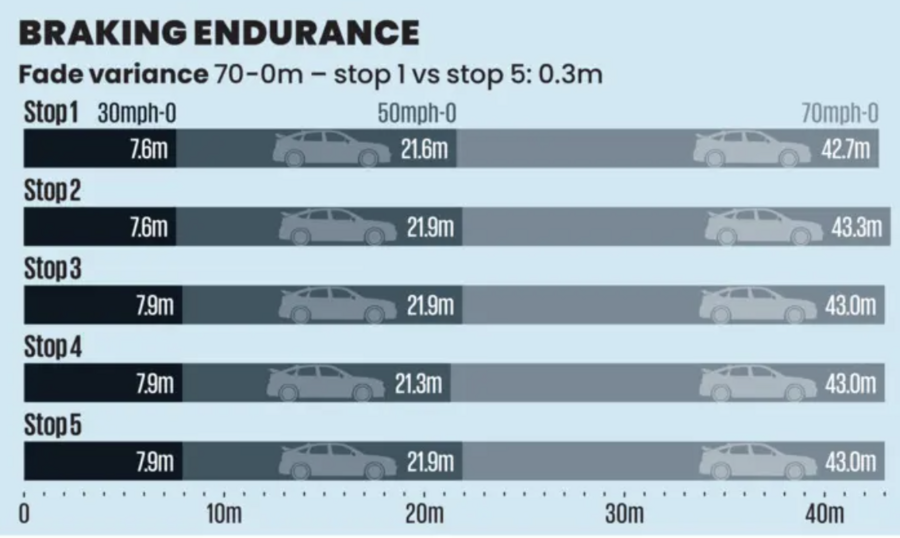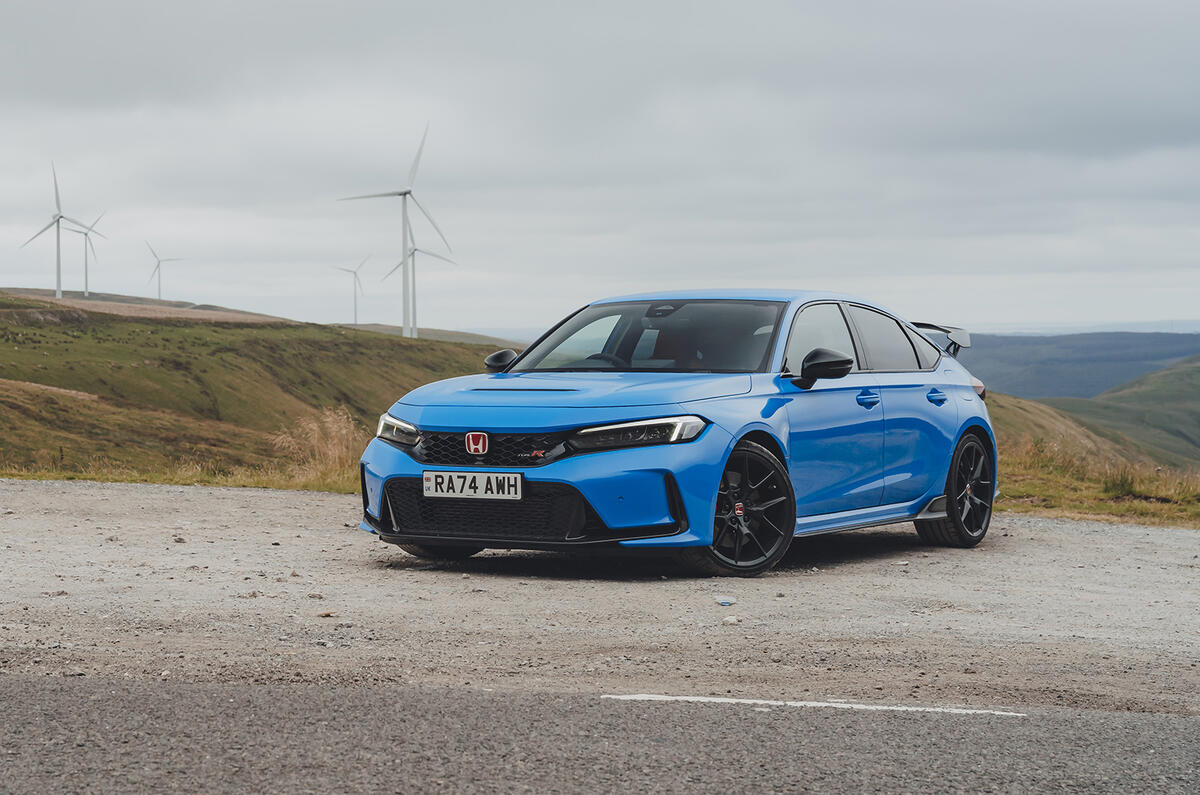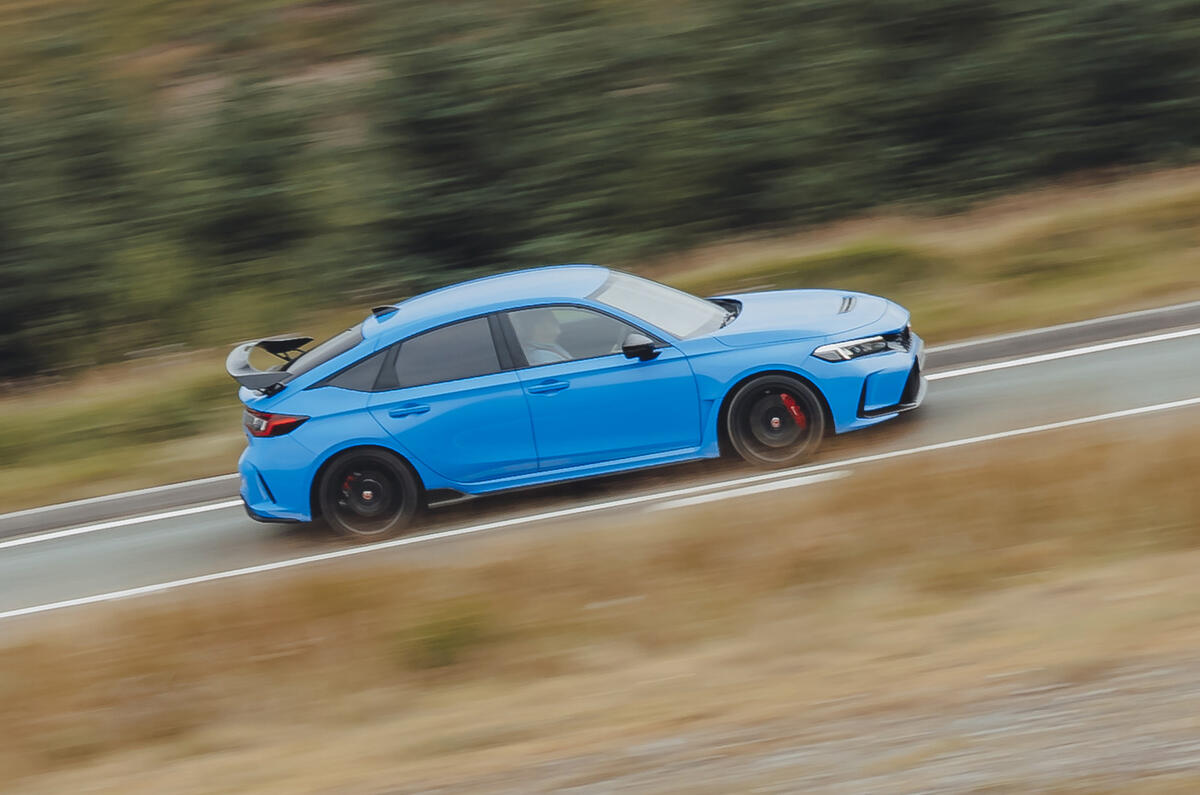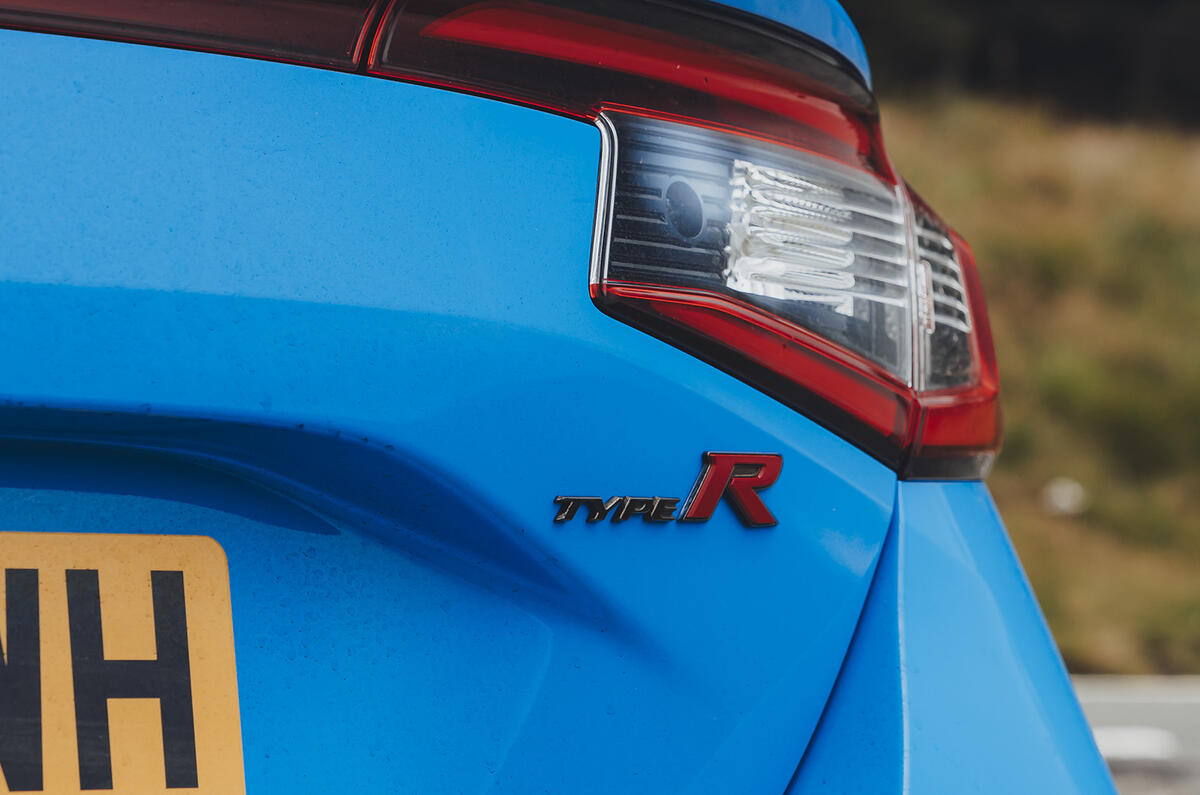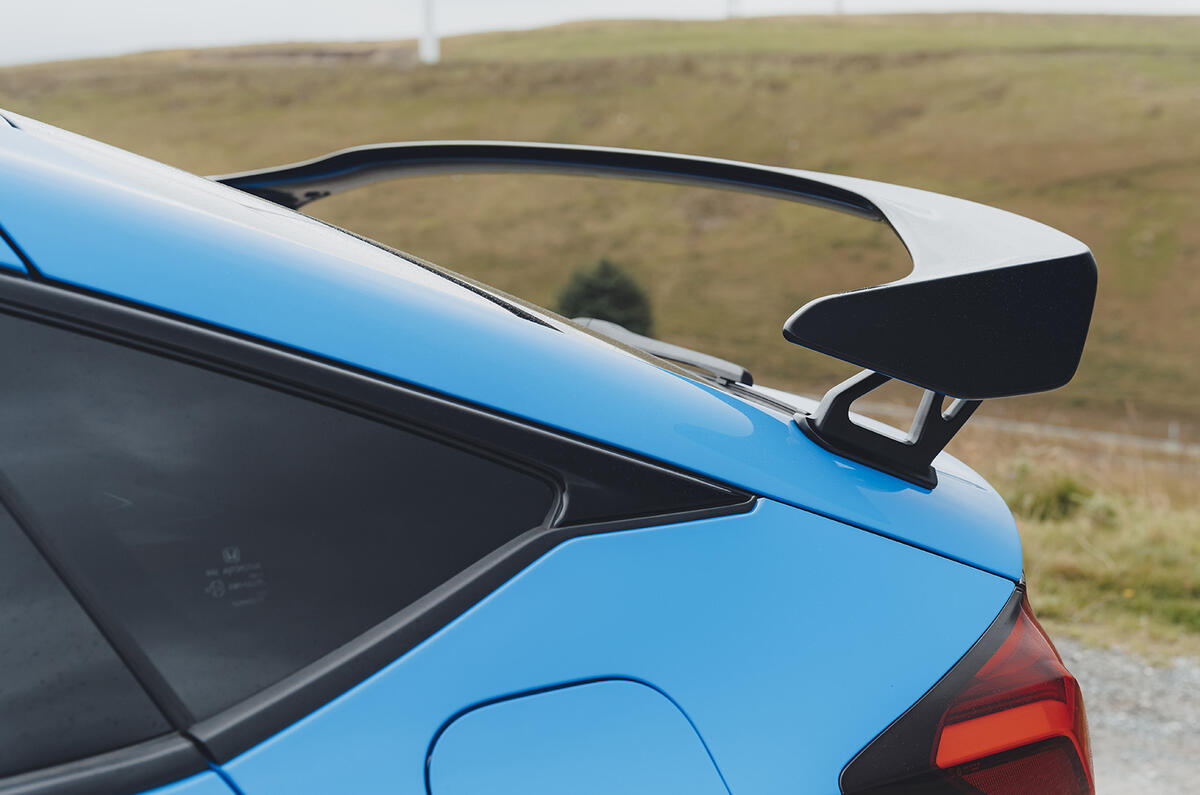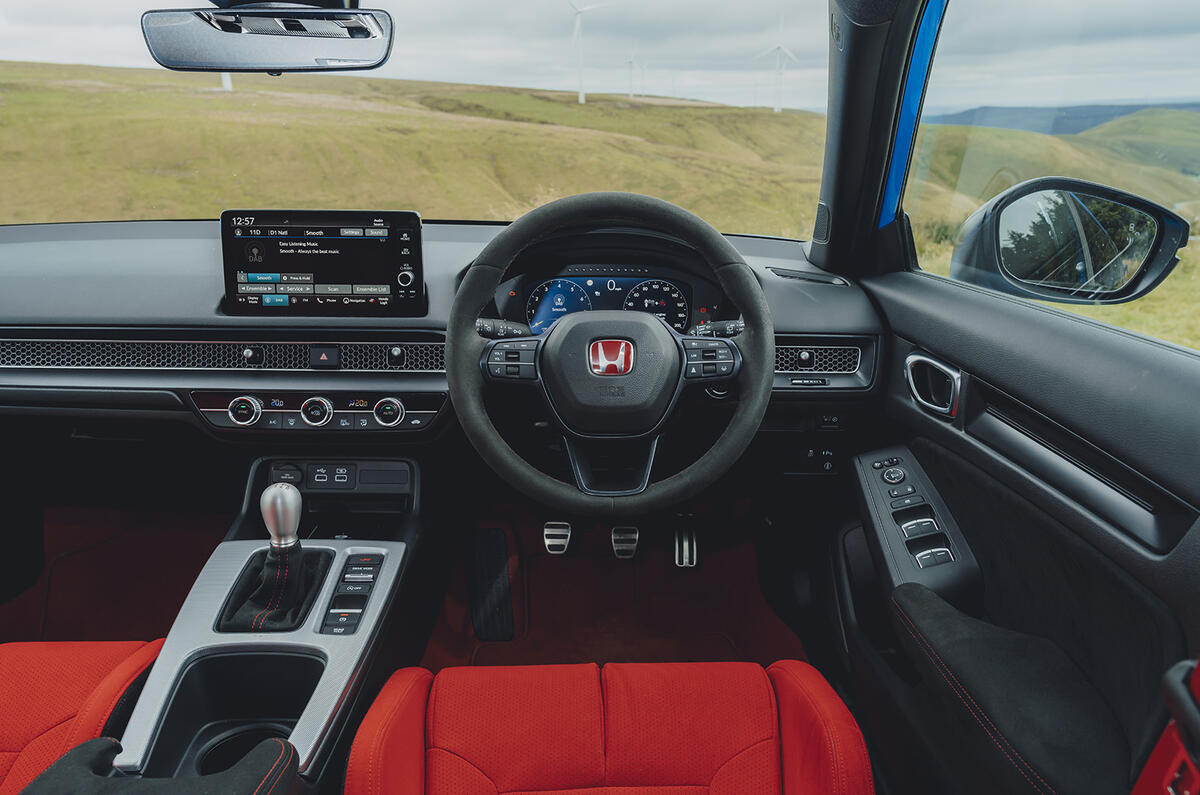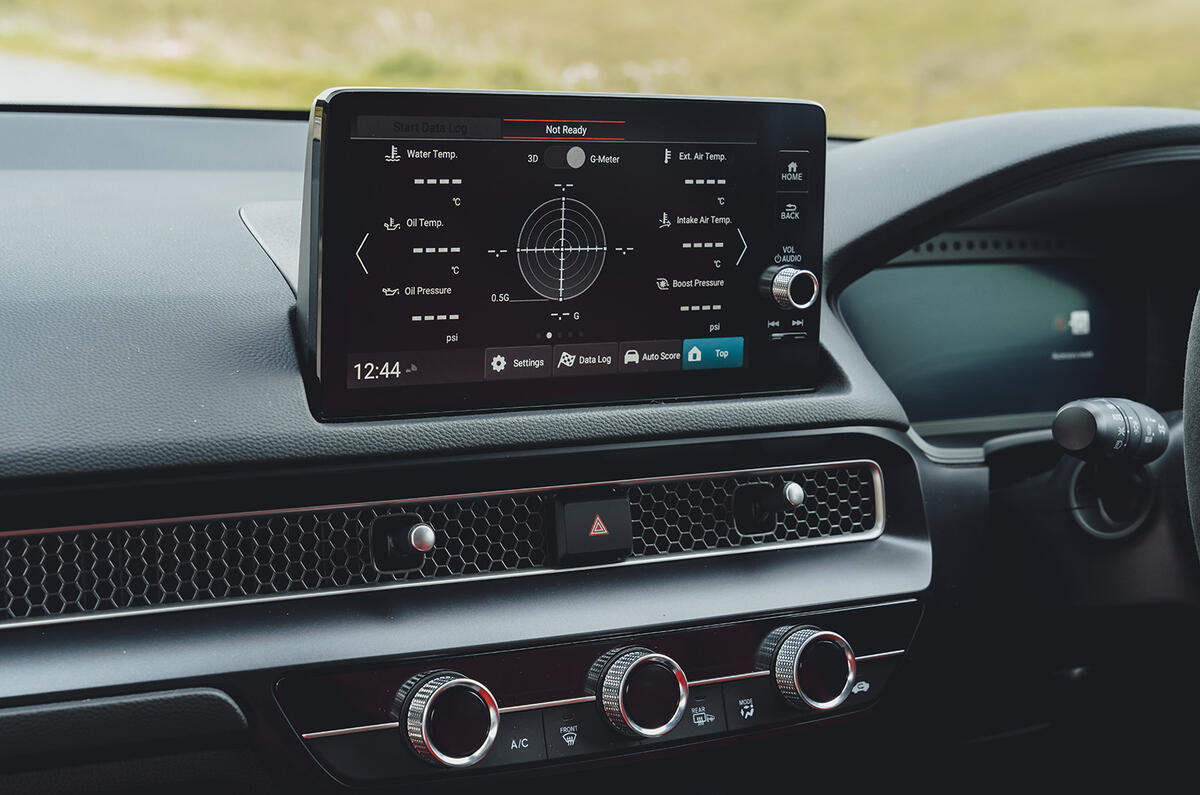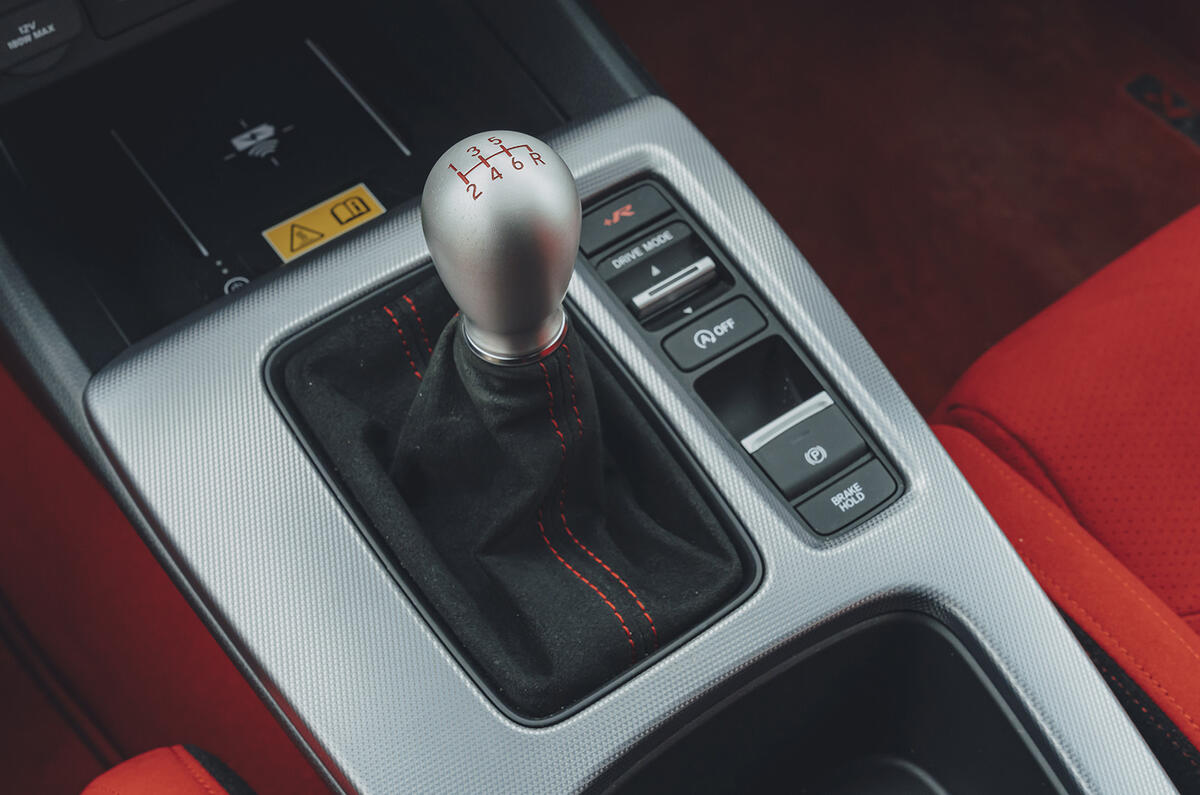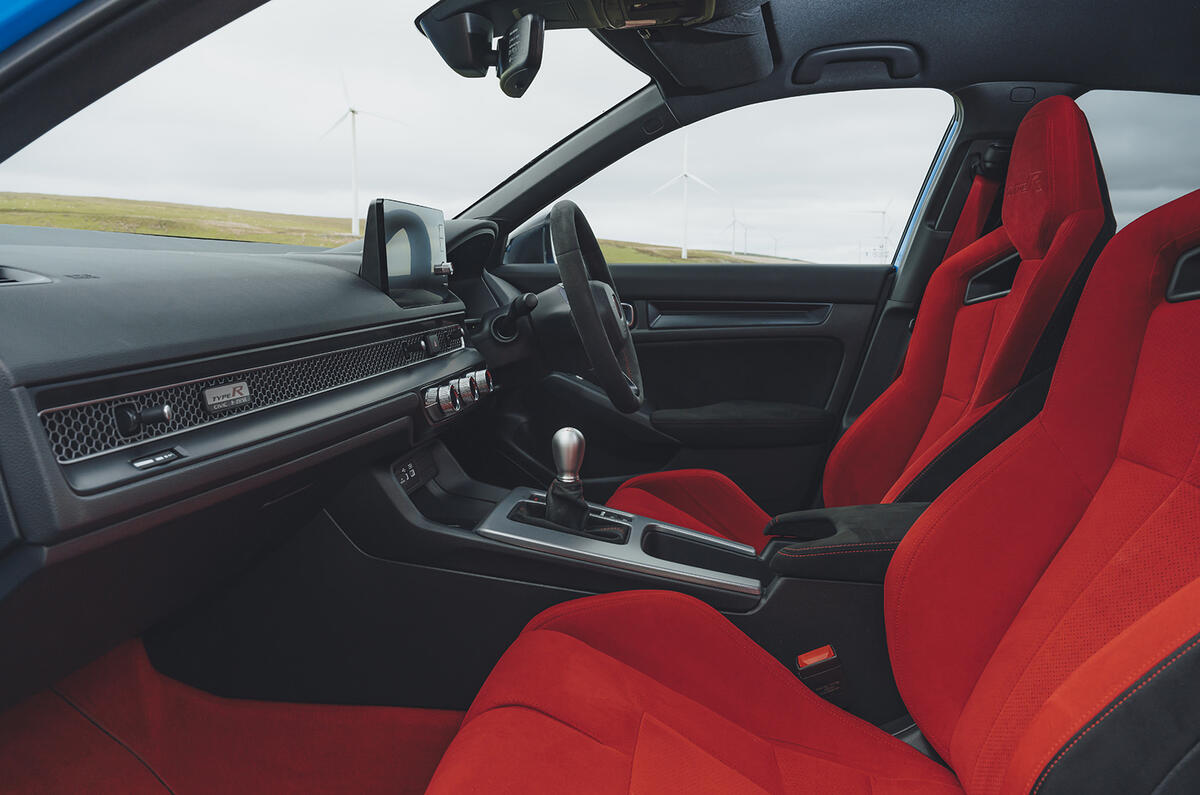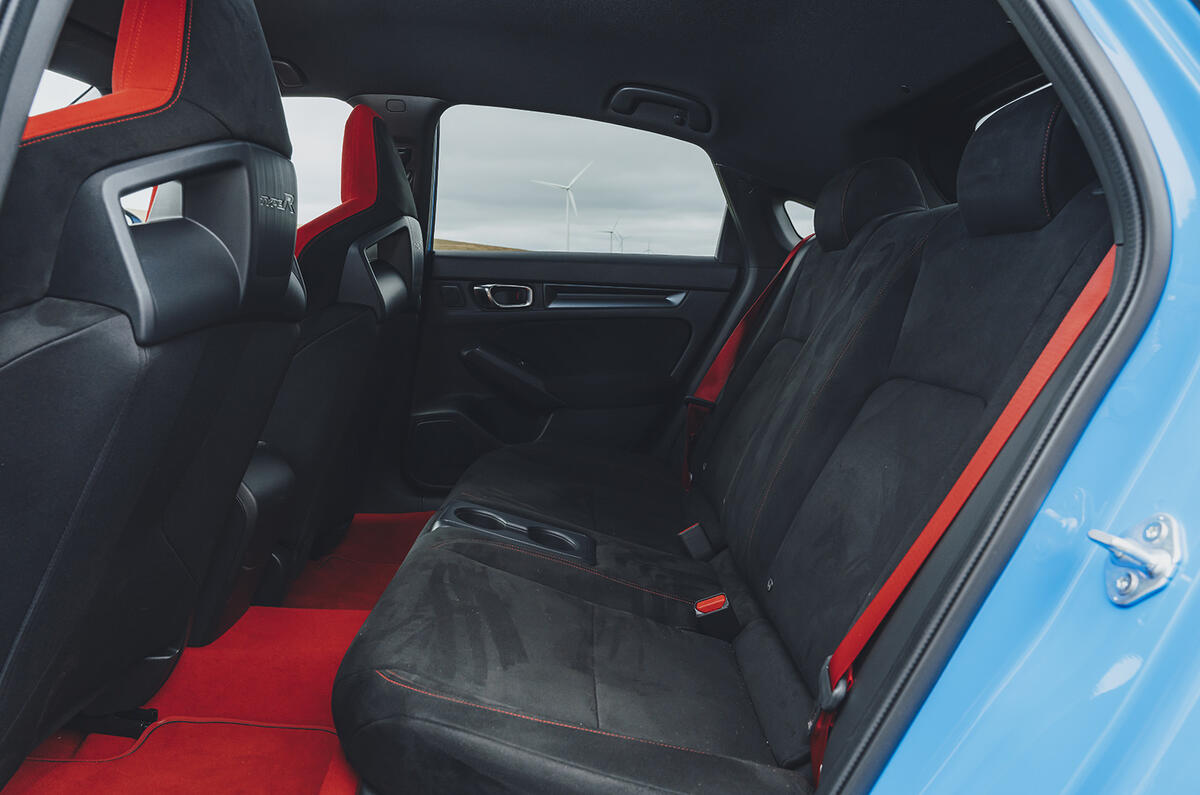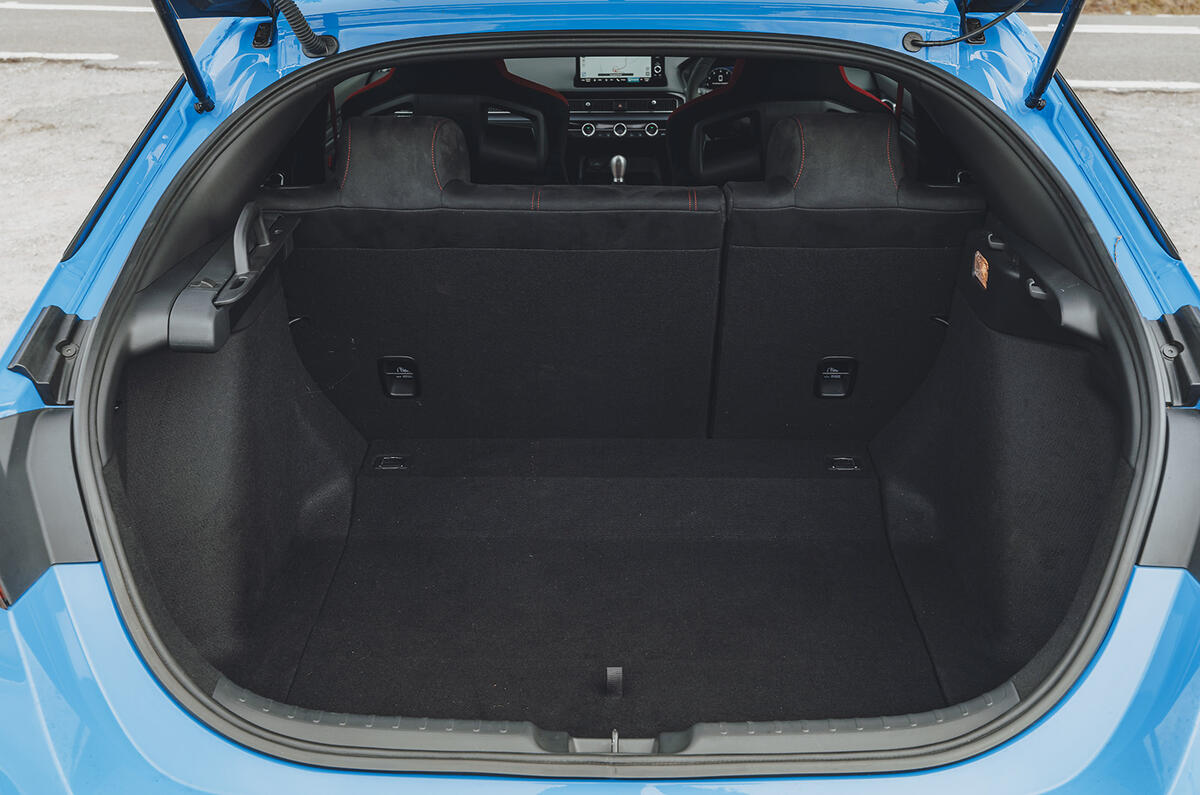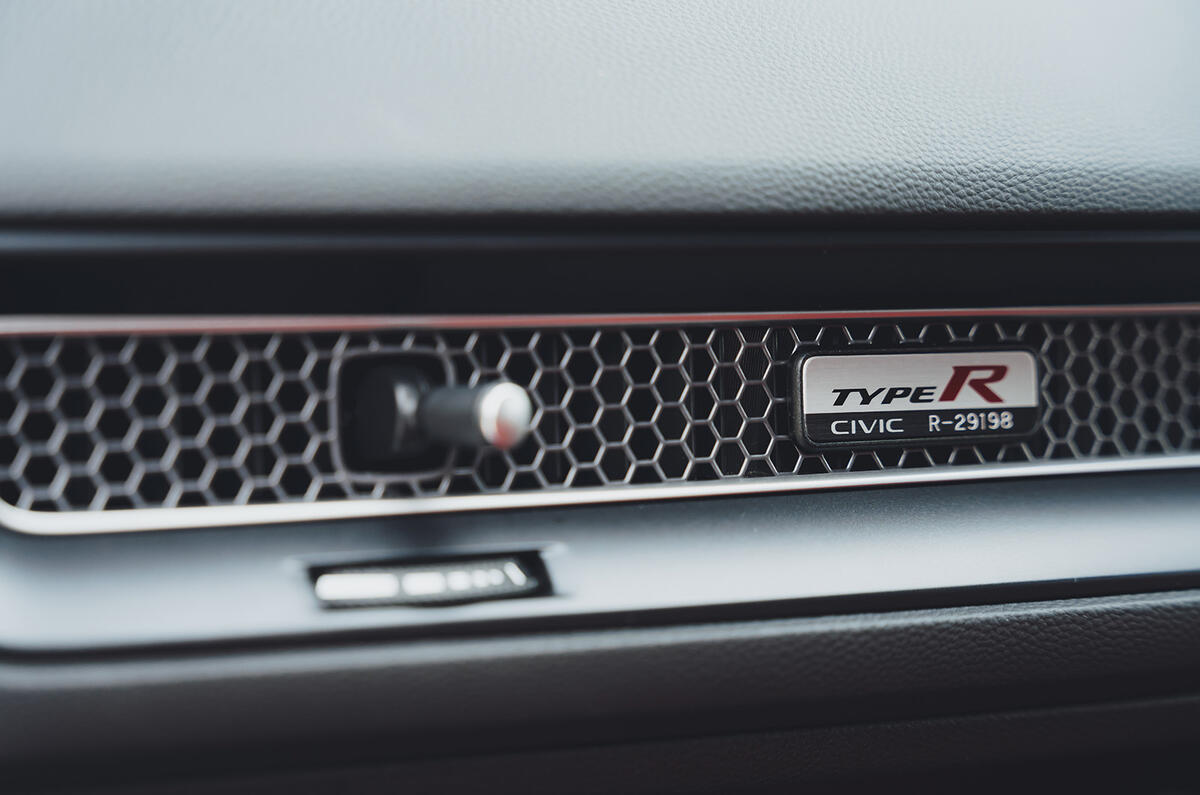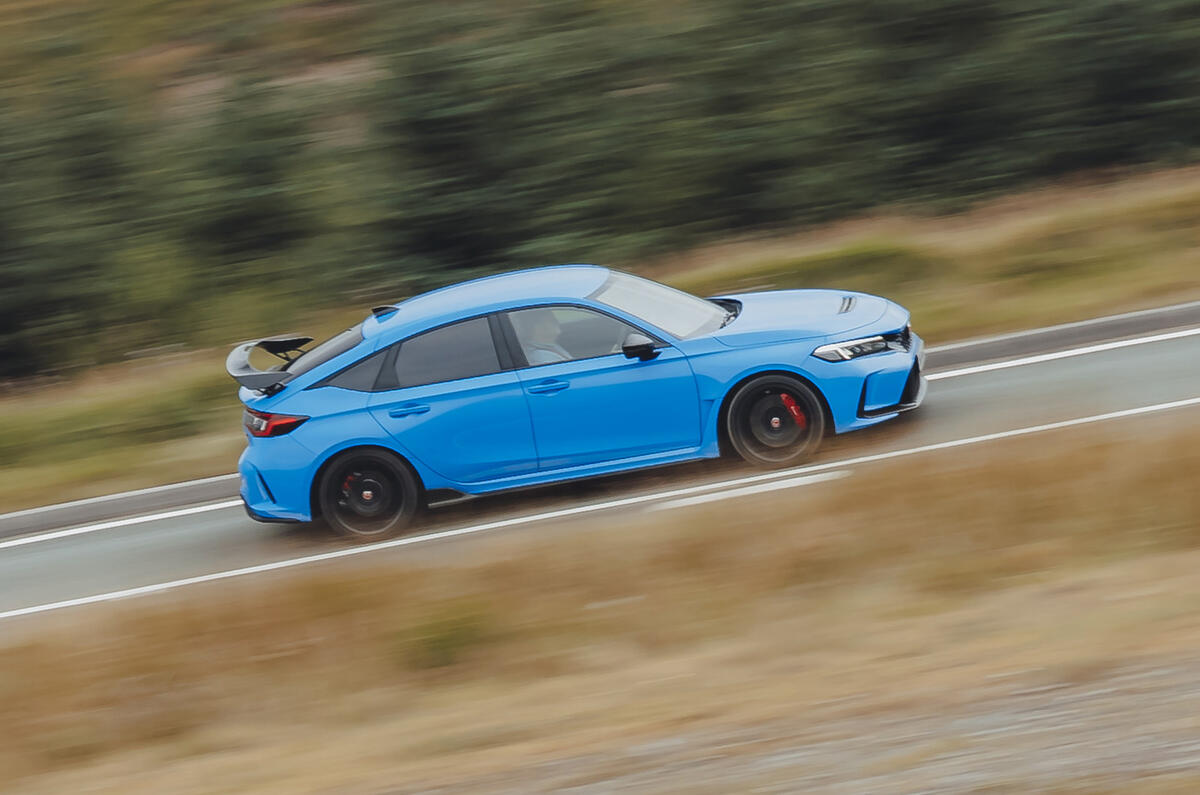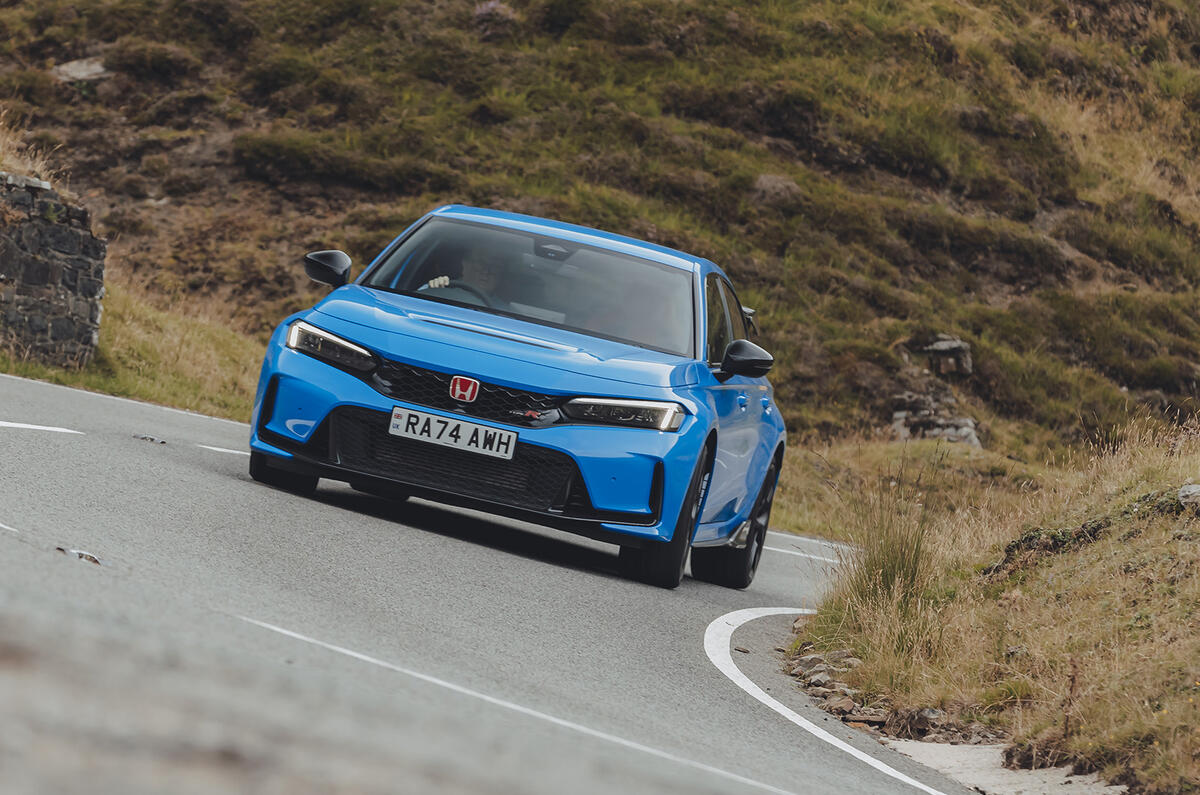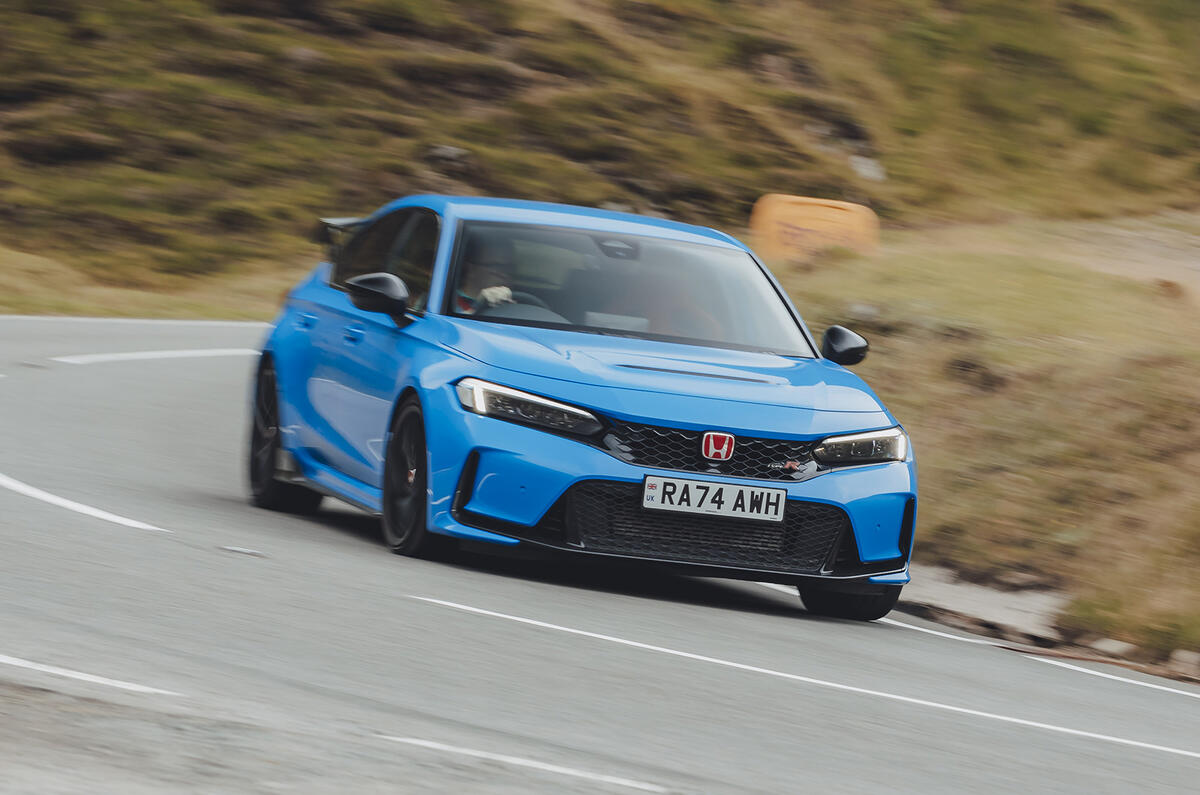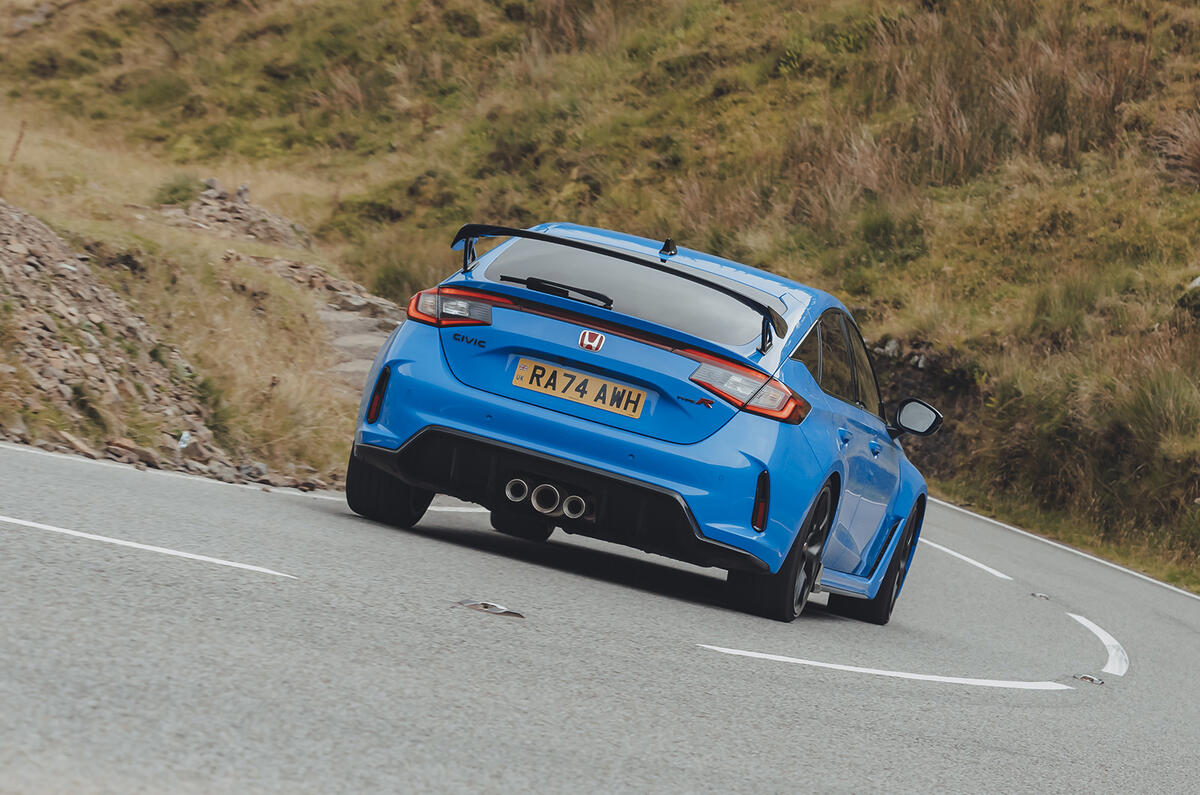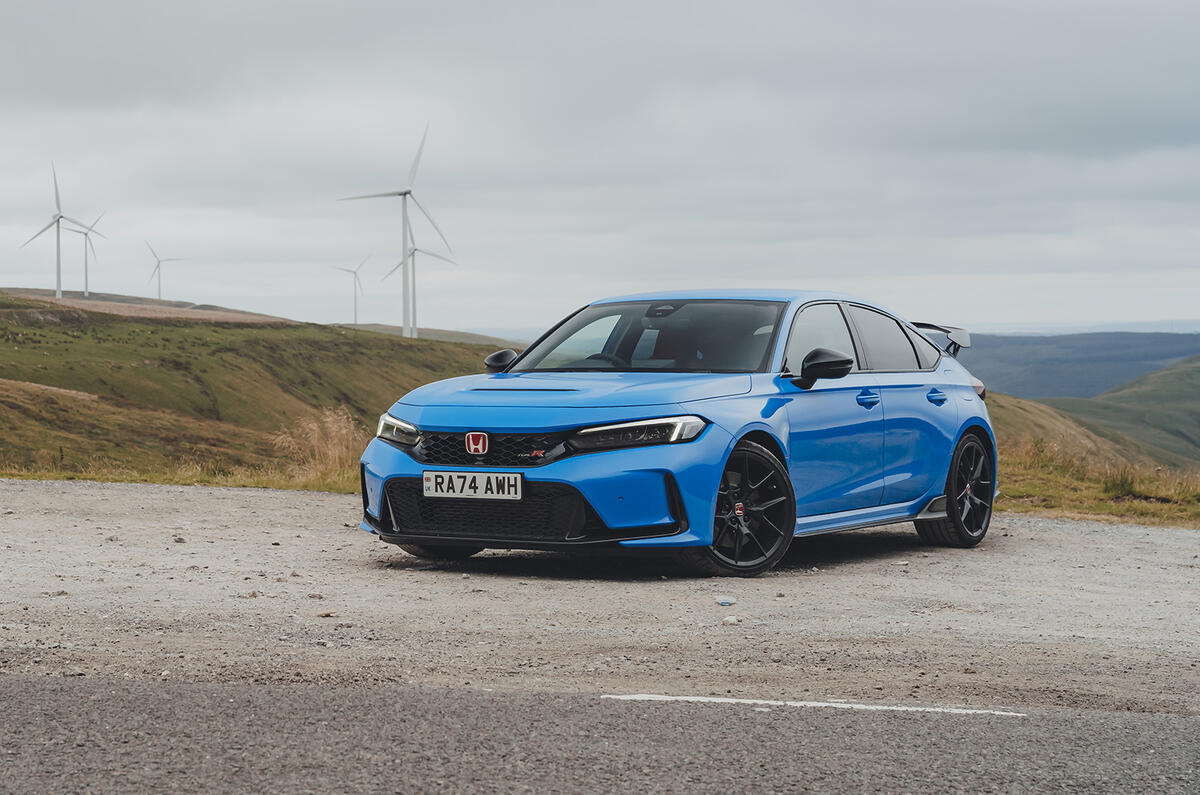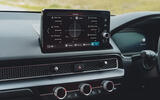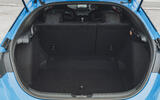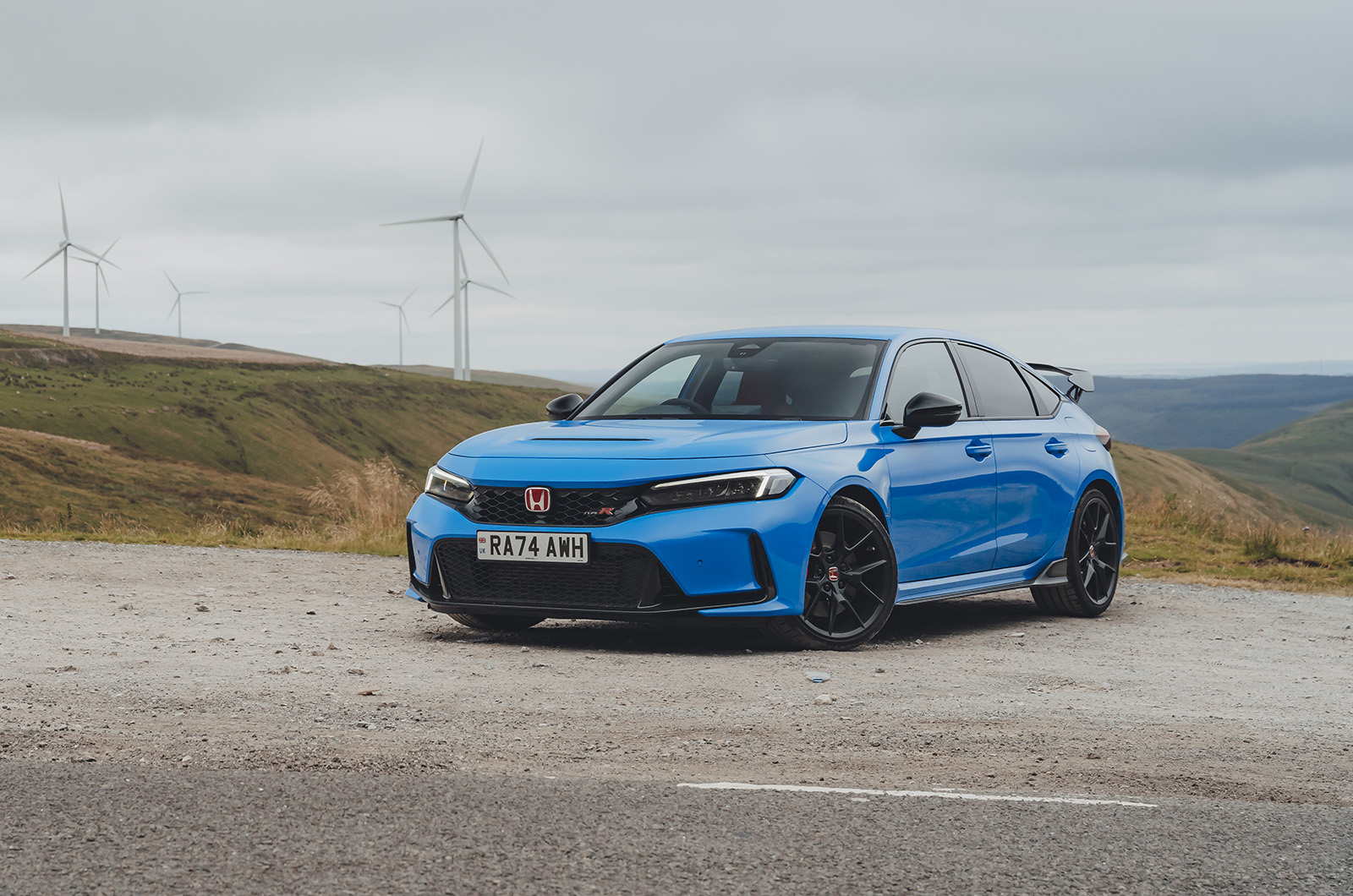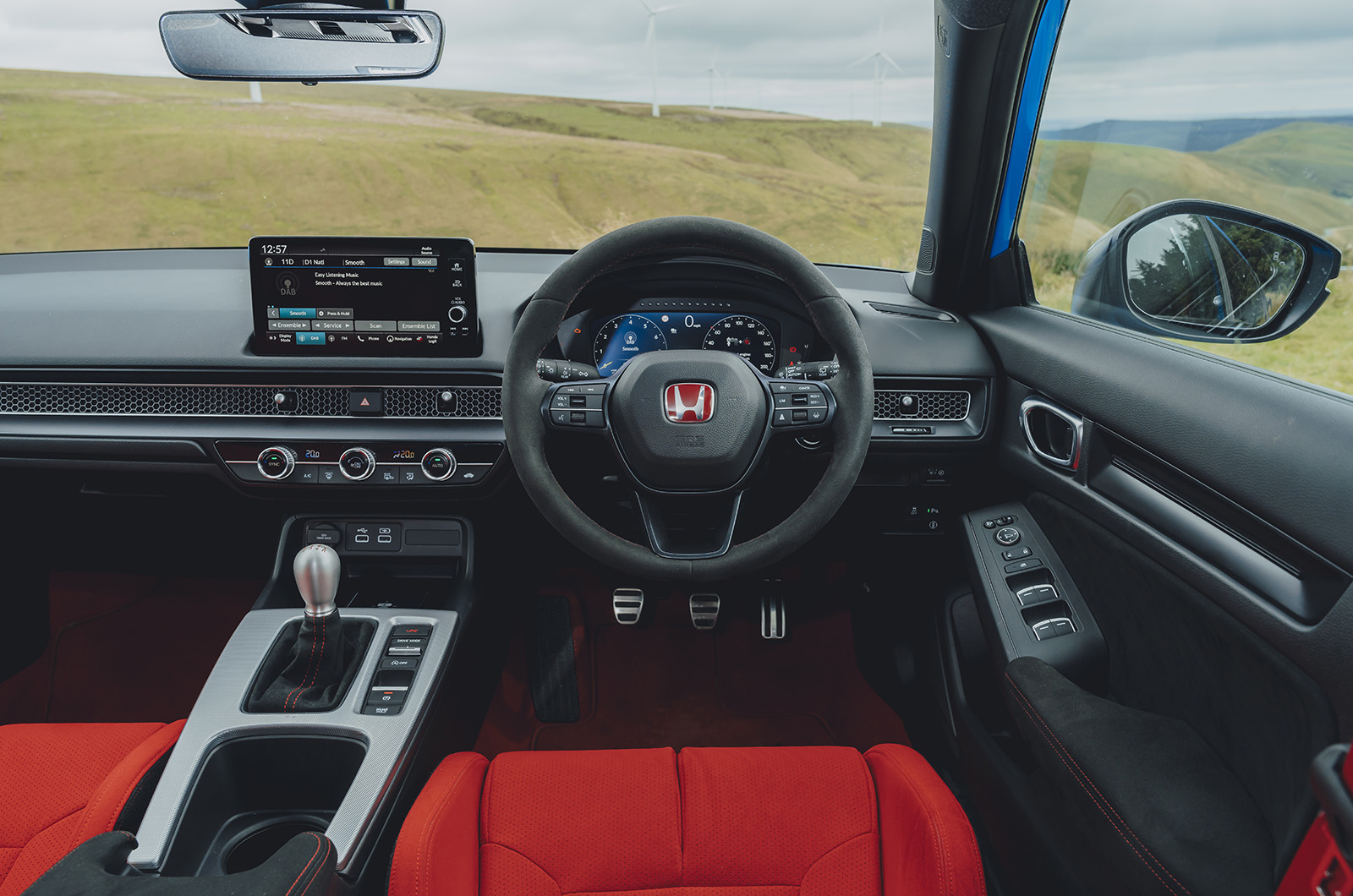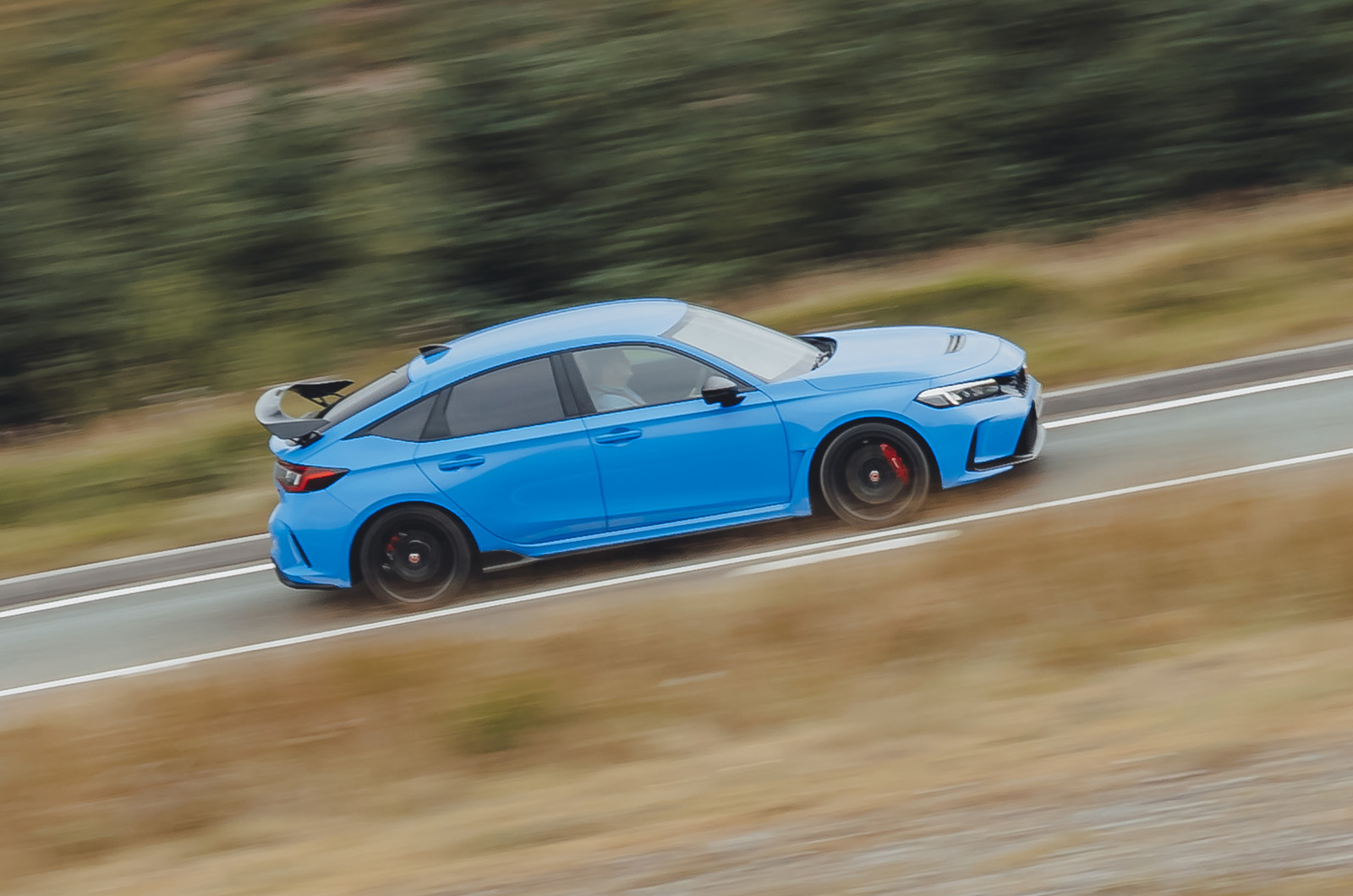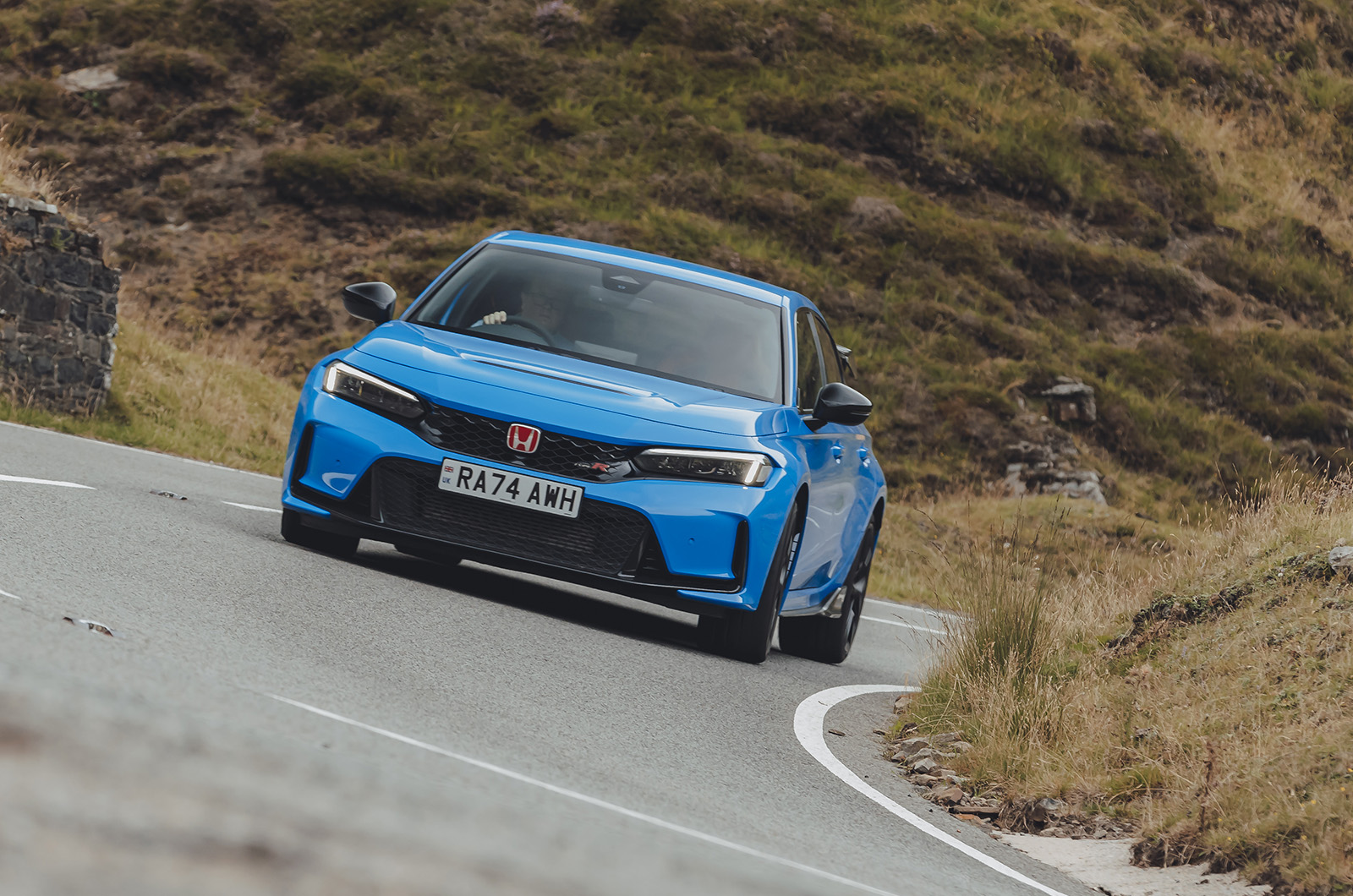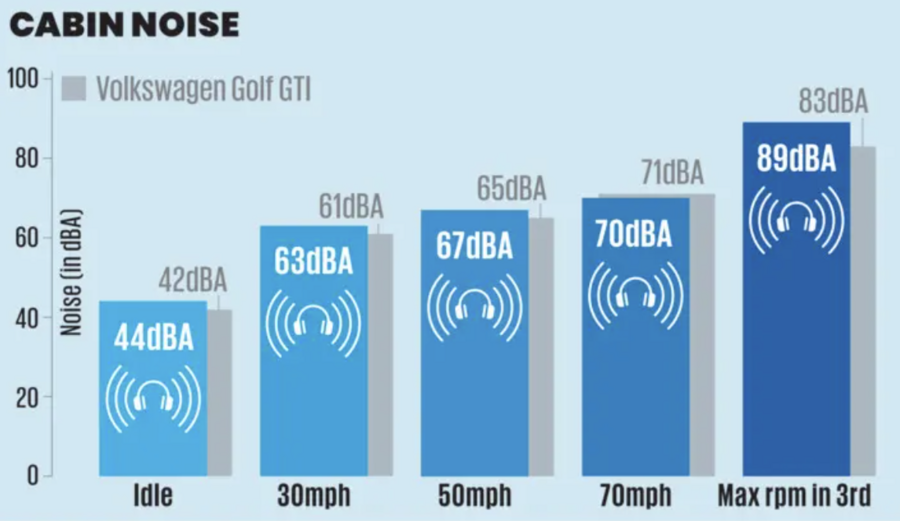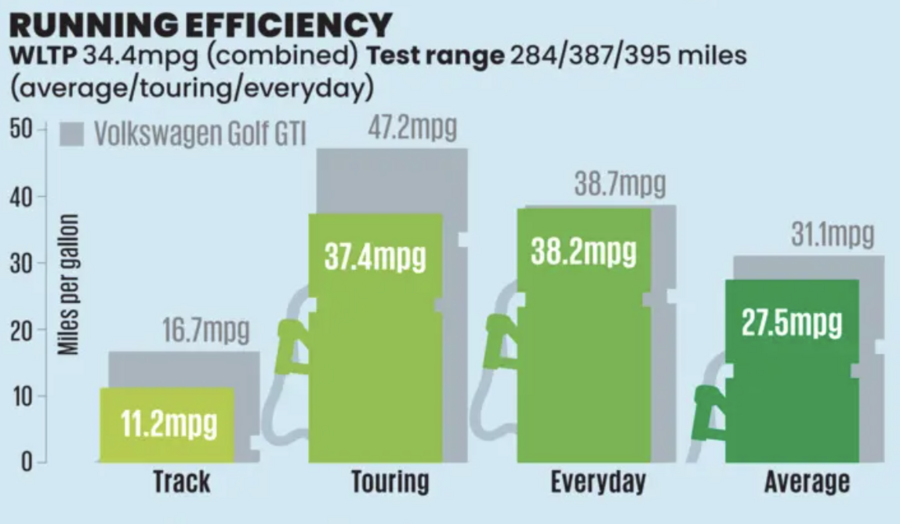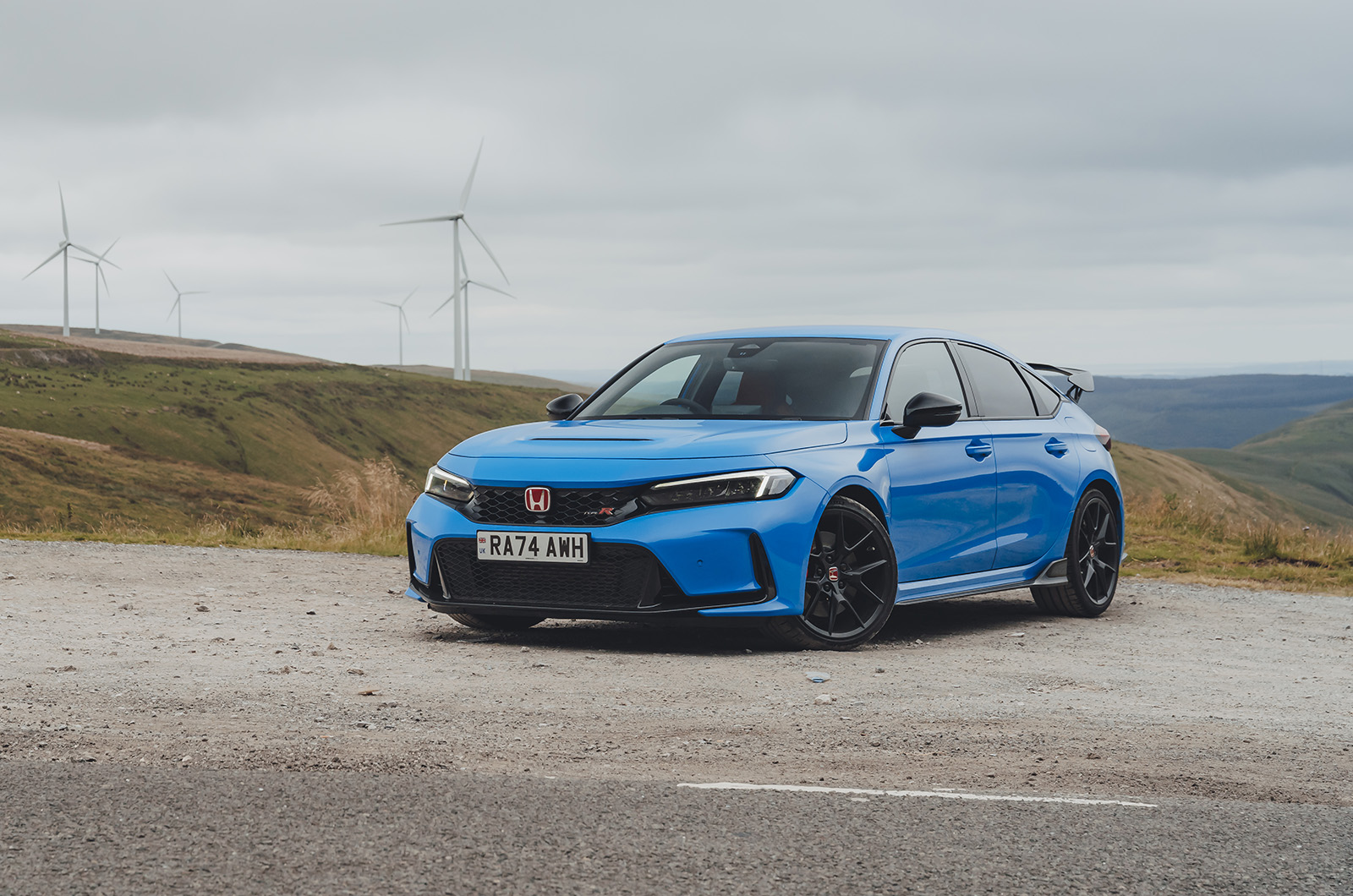Roused by a disappointingly discreet-looking black starter button (it’s the one item in the interior that clearly ought to be red, but isn’t), the Civic Type R’s 2.0-litre inline four settles down to an only averagely ostentatious-sounding bassy hum. Remember the high-revving cold-start idle of the naturally aspirated FN2-generation ‘spaceship’ Type R? There are no such attention-seeking histrionics here. Not at first, at any rate.
Dip the clutch and engage gear, and you have unearthed a couple of enticing adverts for this driving experience already. Both clutch and gearchange have ideal weight and great connected feel, allowing you to hook driveline engagements with delectable tactile satisfaction. Hardly any of the few remaining manual gearboxes can rival either. You feel like you’re operating something precisely executed and very finely honed indeed. And you must be: the proof being that, should you need to, you can slam upshifts through the car’s six-speed manual gate without even lifting your right foot from maximum travel on the accelerator, in time-honoured road test benchmarking ‘powershift’ convention – and all without even a hint of baulking in the action. In this respect and others, this Type R feels more ready to be driven to extremes than any other front-driven hot hatchback we can think of.
What kind of extremes? Well, where outright standing start acceleration is concerned, not monumental ones, but extremes all the same. Like plenty of its peers and in a bid to project its driveline, the Type R limits available torque in first gear when the clutch is disengaged, so you’re never sure that you’ve found the optimal meeting of throttle, revs, wheelslip and clutch actuation to get the car truly rocketing forwards.
We failed narrowly to match Honda’s 5.4sec 0-62mph sprint claim, hitting 60mph from rest in 5.4sec and 62mph in 5.9sec. A handful of hot hatchbacks have gone quicker over the years, but none without the aid of either a dual-clutch automatic gearbox to rattle through the shifts, or four-wheel drive – or both. The FK8, meanwhile, was a tenth slower back in 2017.
Honda’s turbo four takes on some really dramatic and unusual character traits as you exercise it. It has cylinders of very slightly oversquare dimensions, so it’s given to revving more freely than other turbo four-pots. And, while there’s still a hint of softness to the way it spools up in the lower reaches of the tacho’s range, there’s appreciable freedom to how the engine spins beyond 5000rpm – and, indeed, all the way to 7000rpm when you require. The noise it makes while doing so – a mix of demonic combustion growl, whistling turbo and ringing exhaust – sounds a little bit like a mix of performance engine and jet turbine.
The car’s gear ratios are well chosen – the 7100rpm limiter is hit at 150mph in fifth gear almost exactly, and you can clear 60mph in second without risking running out of revs. Its brake pedal is medium-firm and progressive, with lots of power and fade resistance waiting when you need it.
